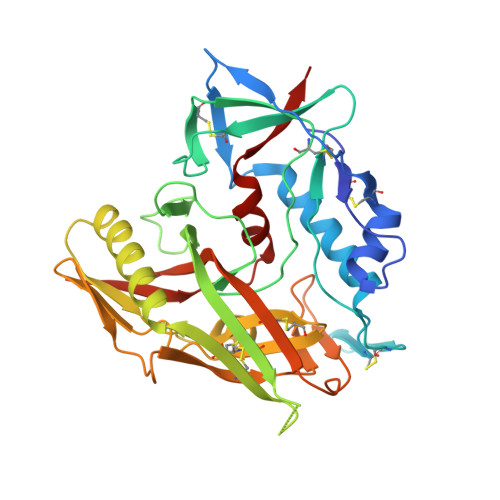Structure-Based Design and Synthesis of an HIV-1 Entry Inhibitor Exploiting X-Ray and Thermodynamic Characterization.
Lalonde, J.M., Le-Khac, M., Jones, D.M., Courter, J.R., Park, J., Schon, A., Princiotto, A.M., Wu, X., Mascola, J.R., Freire, E., Sodroski, J., Madani, N., Hendrickson, W.A., Smith, A.B.(2013) ACS Med Chem Lett 4: 338-343
- PubMed: 23667716
- DOI: https://doi.org/10.1021/ml300407y
- Primary Citation of Related Structures:
4I53, 4I54 - PubMed Abstract:
The design, synthesis, thermodynamic and crystallographic characterization of a potent, broad spectrum, second-generation HIV-1 entry inhibitor that engages conserved carbonyl hydrogen bonds within gp120 has been achieved. The optimized antagonist exhibits a sub-micromolar binding affinity (110 nM) and inhibits viral entry of clade B and C viruses (IC 50 geometric mean titer of 1.7 and 14.0 μM, respectively), without promoting CD4-independent viral entry. thermodynamic signatures indicate a binding preference for the ( R,R )-over the ( S,S )-enantiomer. The crystal structure of the small molecule-gp120 complex reveals the displacement of crystallographic water and the formation of a hydrogen bond with a backbone carbonyl of the bridging sheet. Thus, structure-based design and synthesis targeting the highly conserved and structurally characterized CD4:gp120 interface is an effective tactic to enhance the neutralization potency of small molecule HIV-1 entry inhibitors.
Organizational Affiliation:
Department of Chemistry, Bryn Mawr College, Bryn Mawr, PA 19010.

















